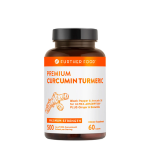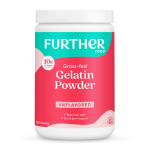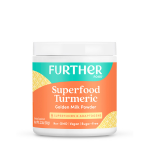Sensitive to Dairy? Why Lactose Pills May Be a Waste of Your Money

There’s been a lot of recent hype about dairy over the last decade. Think you may be sensitive to dairy? It could be lactose intolerance or a specific milk allergy. While dairy causes an inflammatory response in both cases, these conditions are separate and distinct from one another. Here’s the physiological lowdown on the difference between lactose intolerance and milk allergy.
Think you may be sensitive to lactose? Here’s the scoop.
Lactose intolerance results when a person does not produce the lactase enzyme. Lactase is an important enzyme responsible for breaking down lactose, the major carbohydrate in milk. Interestingly enough, as we age, our endogenous production of the lactase enzyme diminishes. This is why lactose intolerance tends to develop in adults. In fact, most adults in the U.S. are lactose intolerant! Lactose intolerance, therefore, is a condition that arises when there is a lactase enzyme deficiency or insufficiency, and a resulting inability to break down the sugar, lactose. Bacteria residing in the colon then feed off of this sugar source. Bacterial metabolism of lactose produces gas, thereby causing symptoms (gas, bloating, abdominal pain etc.) commonly associated with lactose intolerance.
Or, is there a chance you may be allergic to milk?
Milk allergy is slightly different. Casein and whey, the two major proteins found in milk, can be problematic for dairy allergy sufferers, leading to inflammation in the GI tract and the symptoms we associate with lactose intolerance (diarrhea, bloating, abdominal pain, etc.). Given that these symptoms are similar, one condition may be mistaken for the other. But let’s distinguish between the two. Alpha S-1 caseins are the most common antigenic culprits in people with dairy allergies. The immune system produces an abnormal response to a protein antigen (i.e., alpha S-1 caseins). This “allergic reaction” can then precipitate dermatological and gastrointestinal symptoms. In severe cases, anaphylaxis may occur.
So, what can I eat? Keep dairy in check.
In those without lactose intolerance or a dairy allergy, current research suggests that moderate intake of low-fat dairy can be protective against systemic inflammation. Conversely, watch out for high fat dairy. Whole milk and even 2% dairy, is high in saturated fat. Several studies have shown that saturated fatty acids trigger an increase in expression of a number of inflammatory genes in fat cells. Furthermore, fatty acids from saturated animal fats stimulate inflammatory molecules in white blood cells, which raises the level of inflammation even more. The increase in the inflammatory response results in damage to body tissues and can manifest itself in some painful and uncomfortable symptoms.
At the end of the day…
So here’s the 411 on reactions to dairy. Lactose intolerance comes about when an individual is unable to metabolize lactose, the main sugar found in milk products. Conversely, milk allergy is a condition in which the body launches an immune response against specific milk proteins. Although symptoms may be similar, these conditions are physiologically distinct. If you suspect you may have an adverse reaction to dairy, consider seeing a doctor in order to get a proper diagnosis!
For some delicious dairy-free treats, check out these recipes!
Cacao Peanut Butter Protein Pudding
Frozen Banana Coconut Cups
3-Ingredient Wildberry Yogurt Nice Cream
Cantaloupe and Fig Green Spoonie
Note: PLEASE consult with your doctor before making any changes to your diet or medications. The material on this site is provided for educational purposes only, and is not to be used for medical advice, diagnosis or treatment.





















